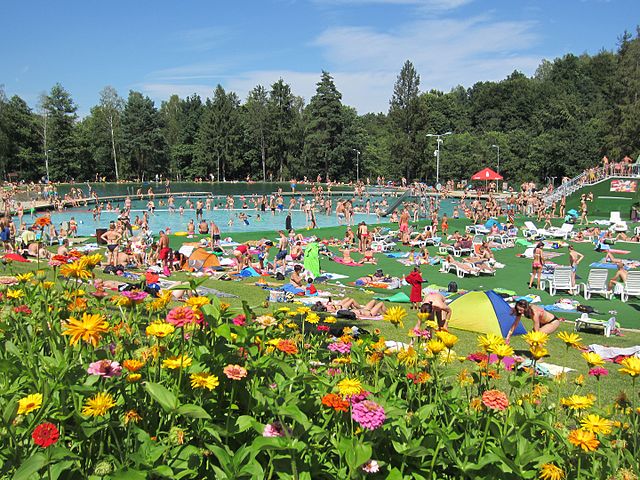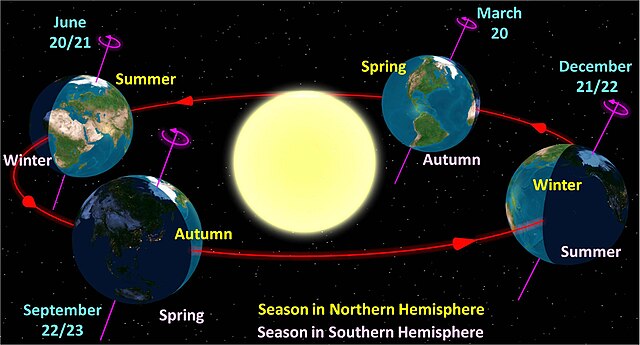Summer is the hottest and brightest of the four temperate seasons, occurring after spring and before autumn. At or centred on the summer solstice, daylight hours are the longest and darkness hours are the shortest, with day length decreasing as the season progresses after the solstice. The earliest sunrises and latest sunsets also occur near the date of the solstice. The date of the beginning of summer varies according to climate, tradition, and culture. When it is summer in the Northern Hemisphere, it is winter in the Southern Hemisphere, and vice versa.
Summer in Belgium
In the middle of summer, the sun can appear even at midnight in the northern hemisphere. Photo of midnight sun in Inari, Finland.
Wet season thunderstorm at night in Darwin, Northern Territory, Australia.
Summer is usually the season of travel, swimming, summer vacation for many people, and also the season for fruits and plants to fully develop.
A season is a division of the year based on changes in weather, ecology, and the number of daylight hours in a given region. On Earth, seasons are the result of the axial parallelism of Earth's tilted orbit around the Sun. In temperate and polar regions, the seasons are marked by changes in the intensity of sunlight that reaches the Earth's surface, variations of which may cause animals to undergo hibernation or to migrate, and plants to be dormant. Various cultures define the number and nature of seasons based on regional variations, and as such there are a number of both modern and historical cultures whose number of seasons varies.
Axial parallelism is a characteristic of the Earth (and most other orbiting bodies in space) in which the direction of the axis remains parallel to itself throughout its orbit.
Illumination of Earth at each change of astronomical season
Two images showing the amount of reflected sunlight at southern and northern summer solstices respectively (watts / m2).
Four Seasons by Alphonse Mucha (1897)








